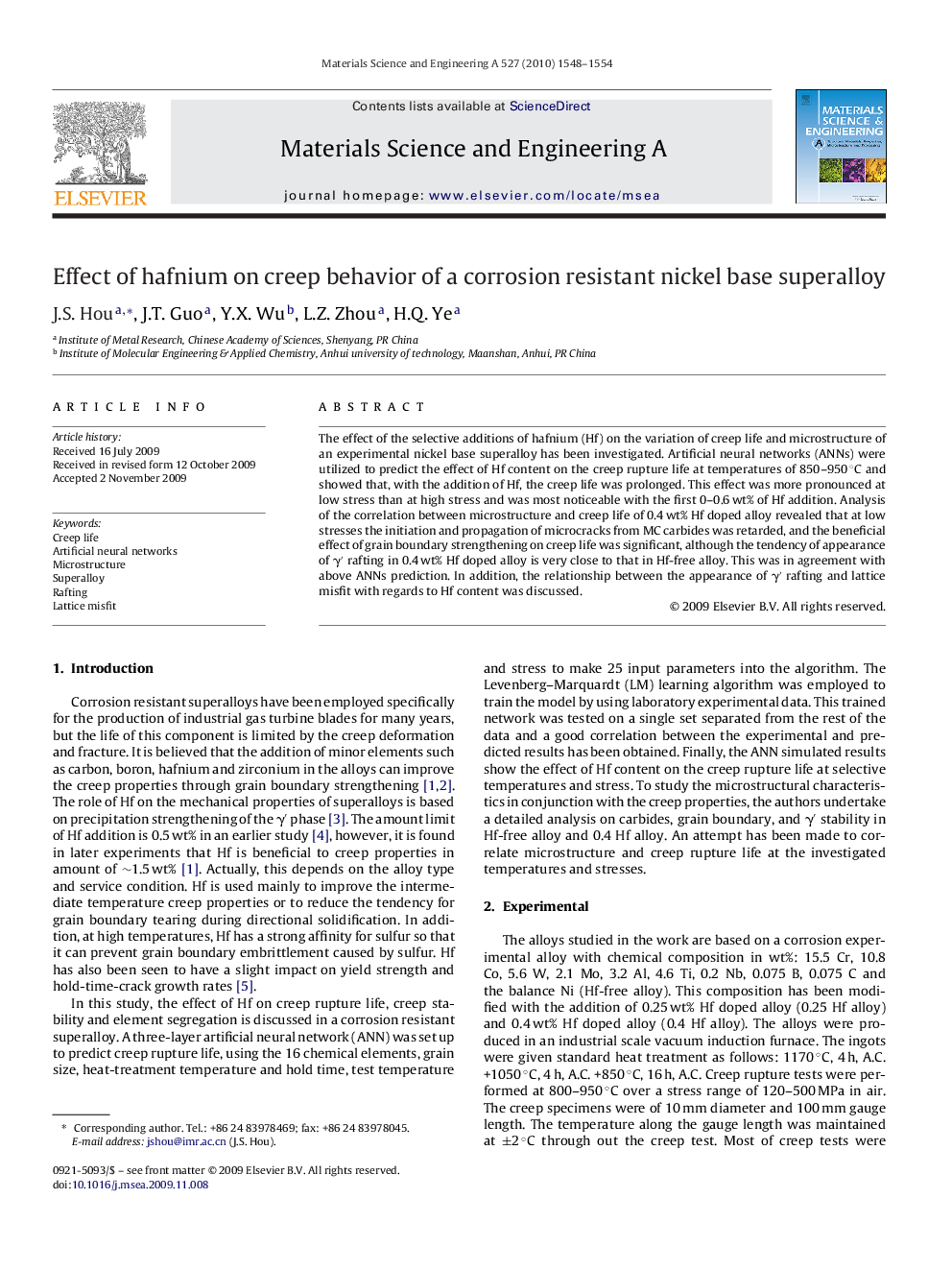| Article ID | Journal | Published Year | Pages | File Type |
|---|---|---|---|---|
| 1579746 | Materials Science and Engineering: A | 2010 | 7 Pages |
Abstract
The effect of the selective additions of hafnium (Hf) on the variation of creep life and microstructure of an experimental nickel base superalloy has been investigated. Artificial neural networks (ANNs) were utilized to predict the effect of Hf content on the creep rupture life at temperatures of 850-950 °C and showed that, with the addition of Hf, the creep life was prolonged. This effect was more pronounced at low stress than at high stress and was most noticeable with the first 0-0.6 wt% of Hf addition. Analysis of the correlation between microstructure and creep life of 0.4 wt% Hf doped alloy revealed that at low stresses the initiation and propagation of microcracks from MC carbides was retarded, and the beneficial effect of grain boundary strengthening on creep life was significant, although the tendency of appearance of γⲠrafting in 0.4 wt% Hf doped alloy is very close to that in Hf-free alloy. This was in agreement with above ANNs prediction. In addition, the relationship between the appearance of γⲠrafting and lattice misfit with regards to Hf content was discussed.
Related Topics
Physical Sciences and Engineering
Materials Science
Materials Science (General)
Authors
J.S. Hou, J.T. Guo, Y.X. Wu, L.Z. Zhou, H.Q. Ye,
